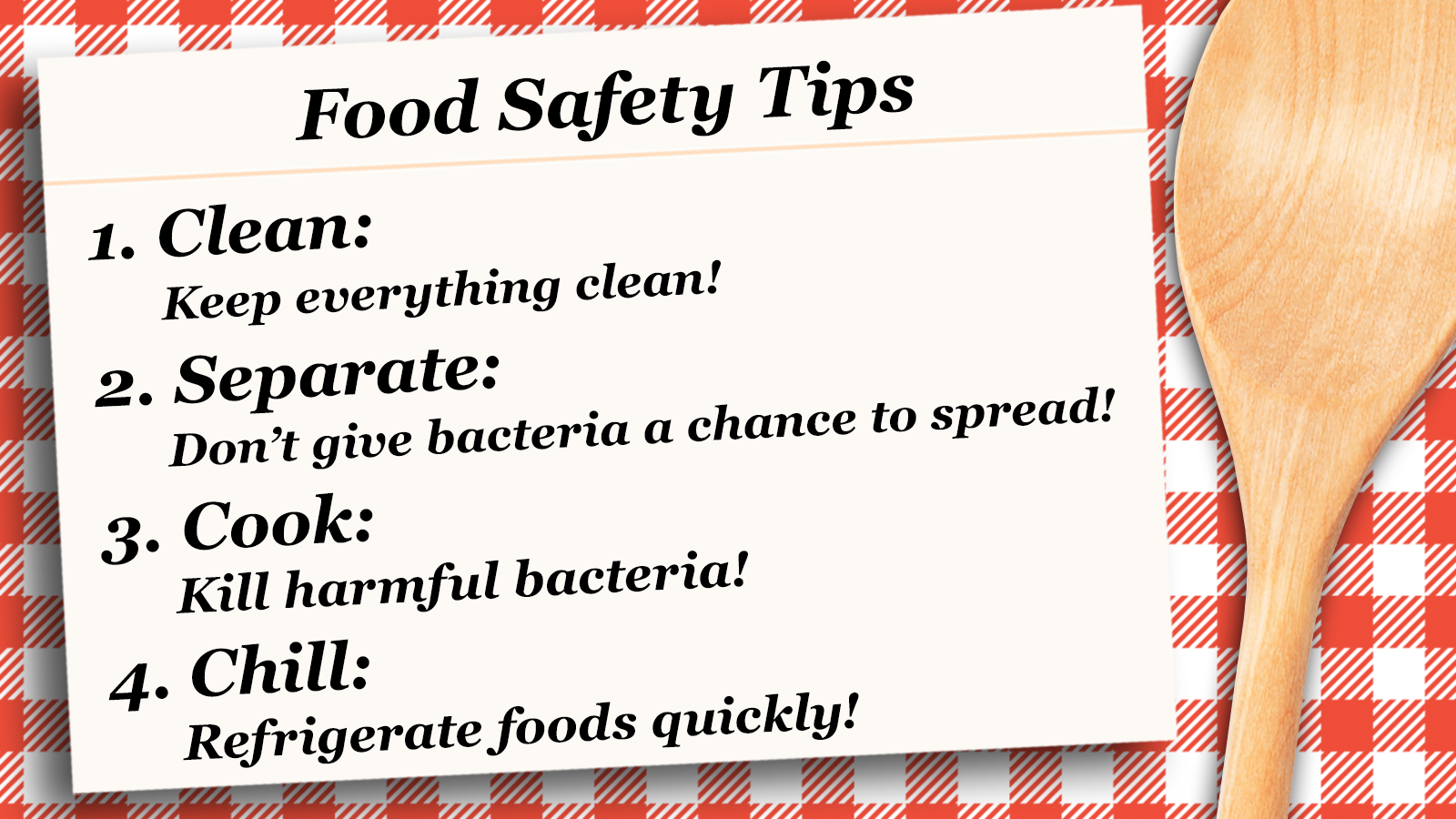The .gov means it’s official.
Federal government websites often end in .gov or .mil. Before sharing sensitive information, make sure you’re on a federal government site.
The site is secure.
The https:// ensures that you are connecting to the official website and that any information you provide is encrypted and transmitted securely.
Following these safe food-handling practices will help prevent food poisoning, also called foodborne illness.
Español
Parties, family dinners, and other gatherings where food is served are all part of the holiday cheer. But the joy can change to misery if food makes you or others ill.
Typical symptoms of foodborne illness, also known as food poisoning, are vomiting, diarrhea, and flu-like symptoms, which can start anywhere from hours to days after contaminated food or drinks are consumed.
The symptoms usually are not long-lasting in healthy people — a few hours or a few days — and usually go away without medical treatment. But foodborne illness can be severe and even life-threatening to anyone, especially those most at risk:
Combating bacteria, viruses, parasites, and other contaminants in our food supply is a high priority for the U.S. Food and Drug Administration. And you play an important role in safe food-handling practices at home. The good news is that practicing four basic food safety measures can help prevent foodborne illness.
The first rule of safe food preparation in the home is to keep everything clean.
Don’t give bacteria the opportunity to spread from one food to another (cross-contamination).
Food is safely cooked when it reaches a high enough internal temperature to kill harmful bacteria.
Refrigerate foods quickly because harmful bacteria grow rapidly at room temperature.
Subscribe to receive Consumer Update email notifications.
